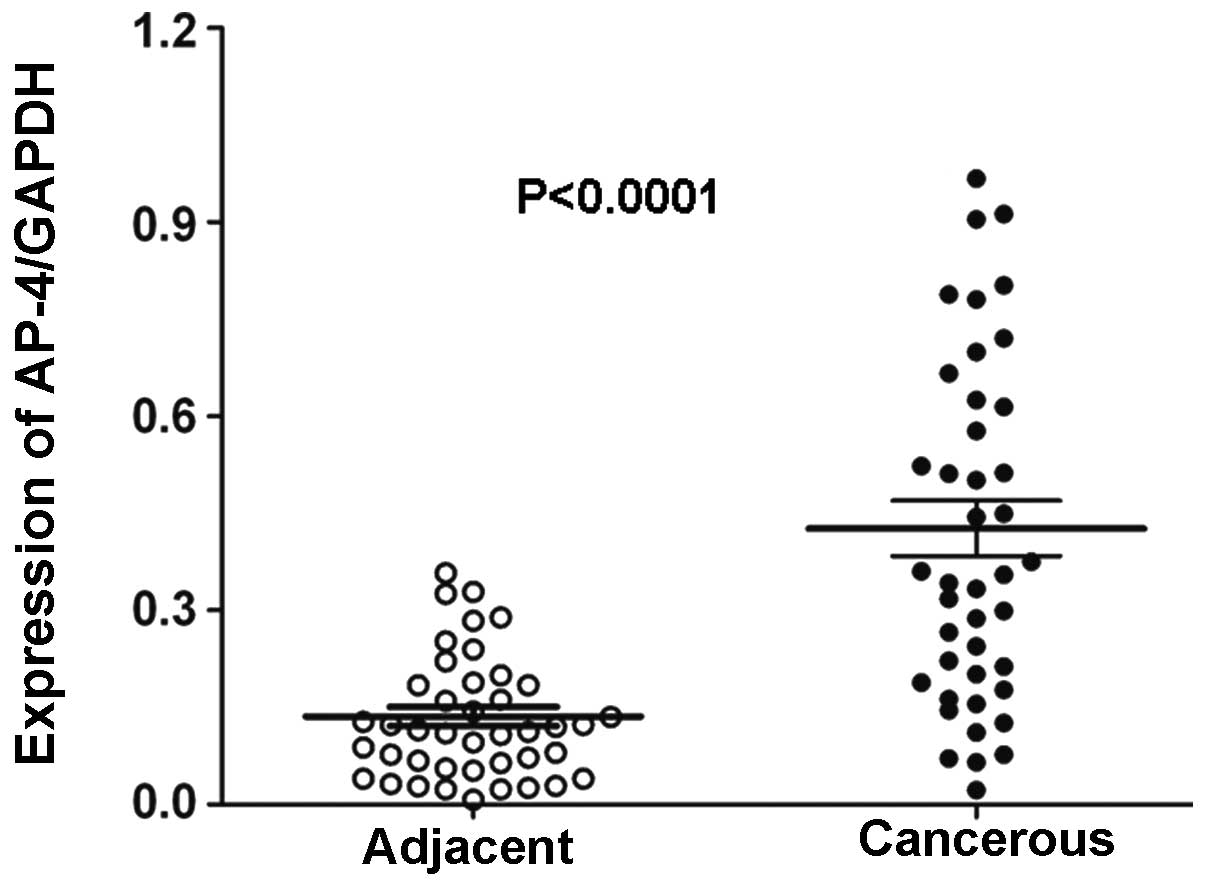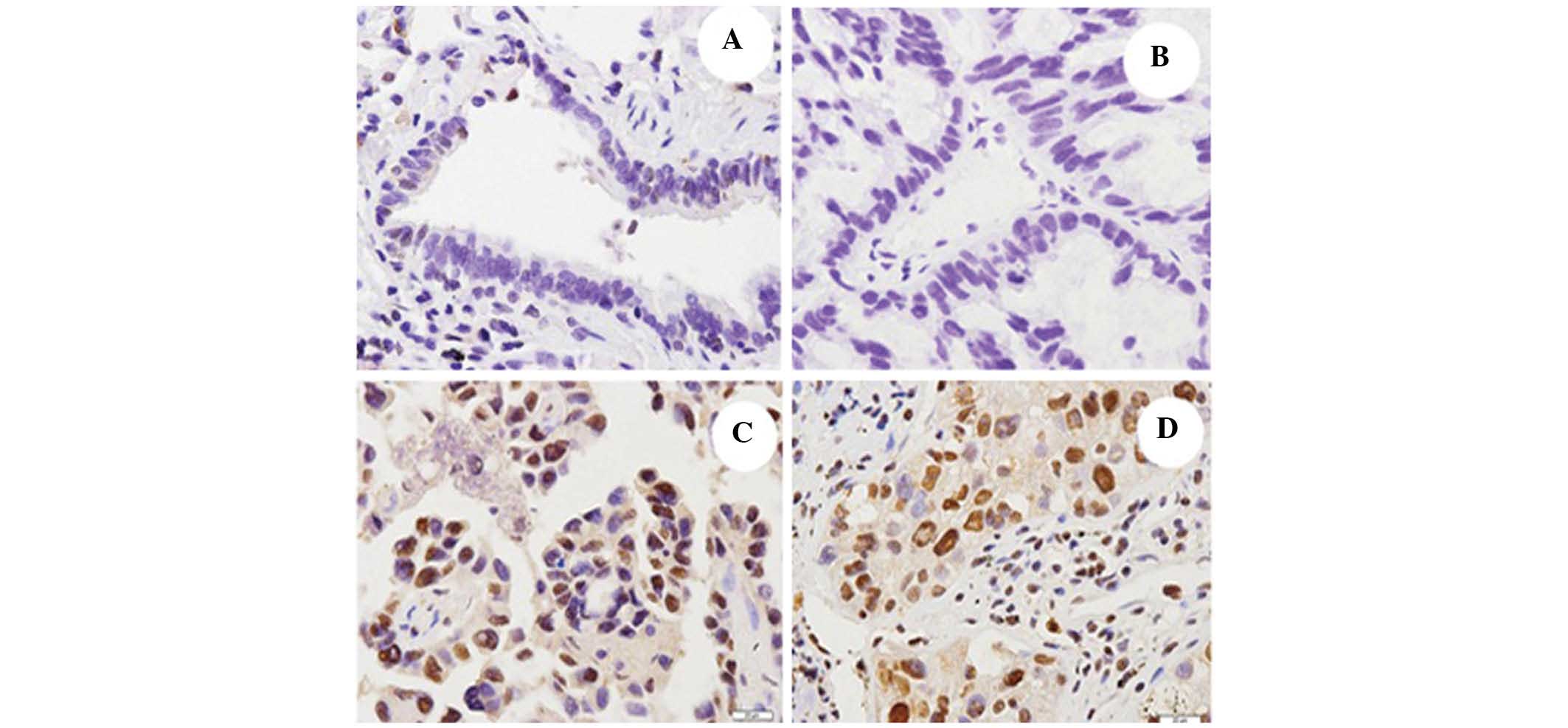AP‑4 predicts poor prognosis in non‑small cell lung cancer
- Authors:
- Published online on: May 2, 2014 https://doi.org/10.3892/mmr.2014.2209
- Pages: 336-340
Metrics: Total
Views: 0 (Spandidos Publications: | PMC Statistics: )
Total PDF Downloads: 0 (Spandidos Publications: | PMC Statistics: )
Abstract
The basic helix‑loop‑helix transcription factor activating enhancer‑binding protein (AP)‑4 has been found to be involved in tumor biology. However, the role of AP‑4 in non‑small cell lung cancer (NSCLC) has yet to be elucidated. The present study aimed to investigate the role of AP‑4 expression in NSCLC. AP‑4 expression as analyzed using quantitative polymerase chain reaction and western blot analyses of 42 fresh NSCLC samples and matched adjacent noncancerous tissues. Immunohistochemistry was performed to assess the clinical significance of AP‑4 expression in tumor tissues of NSCLC patients (n=240) and matched adjacent noncancerous tissues. The correlation between AP‑4 expression, clinicopathological features and clinical outcome were investigated. AP‑4 expression was found to be increased in the NSCLC samples at the gene and protein levels compared with the matched adjacent noncancerous tissues. Immunohistochemistry revealed that the positive expression rates of AP‑4 in the 240 NSCLC samples and the matched adjacent noncancerous tissues were 48.3 and 5.8%, respectively. Positive AP‑4 expression was found to be significantly associated with the tumor, nodes and metastasis stage and nodal status. Furthermore, patients with NSCLC tumors expressing AP‑4 were observed to have a poorer prognosis than those without AP‑4 expression. Multivariate analysis revealed that AP‑4 expression was an independent prognostic marker (hazard ratio, 2.543; 95% confidence interval, 1.18‑5.016; P=0.016) in NSCLC. Thus, positive AP‑4 expression may be a potential prognostic marker for NSCLC.













